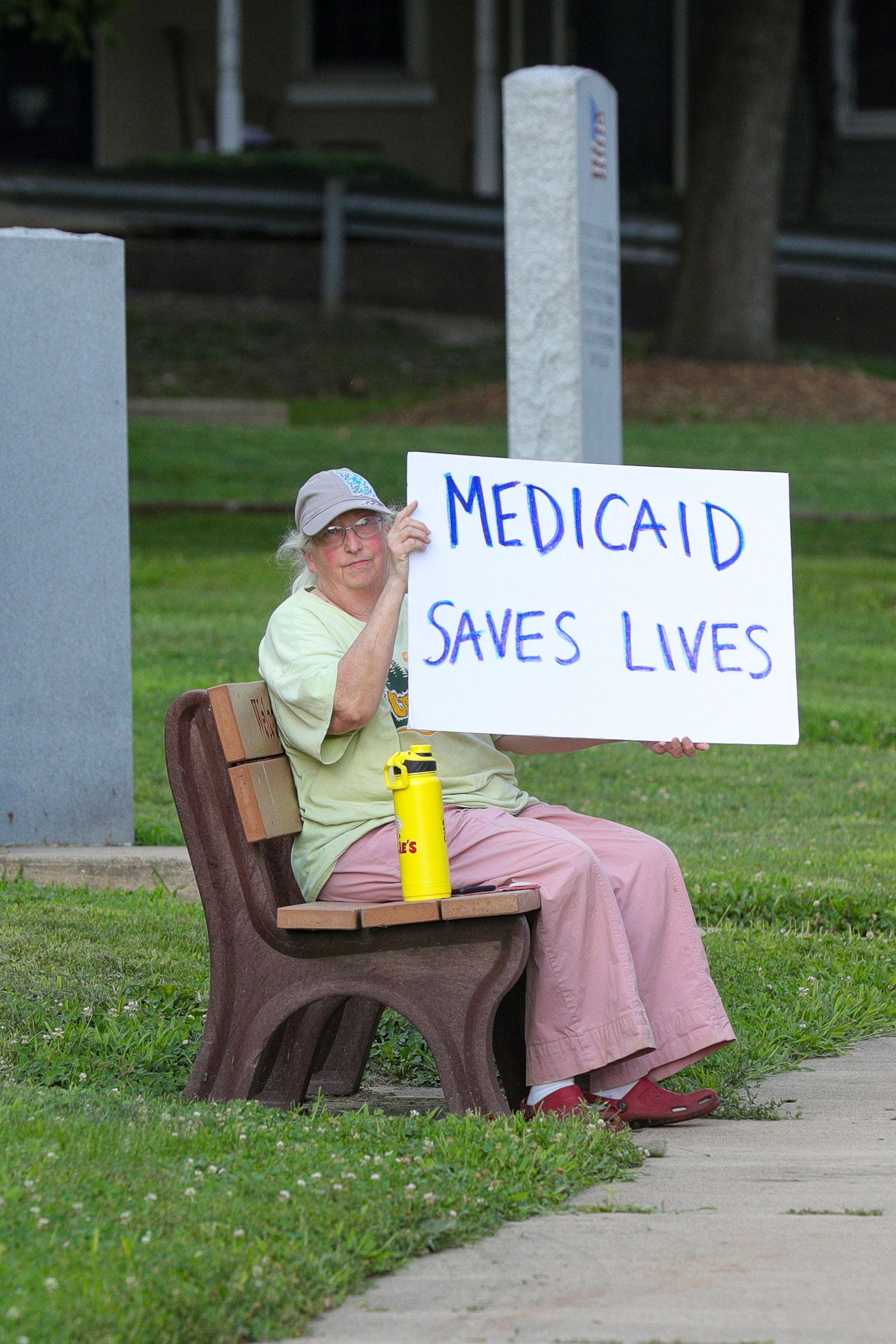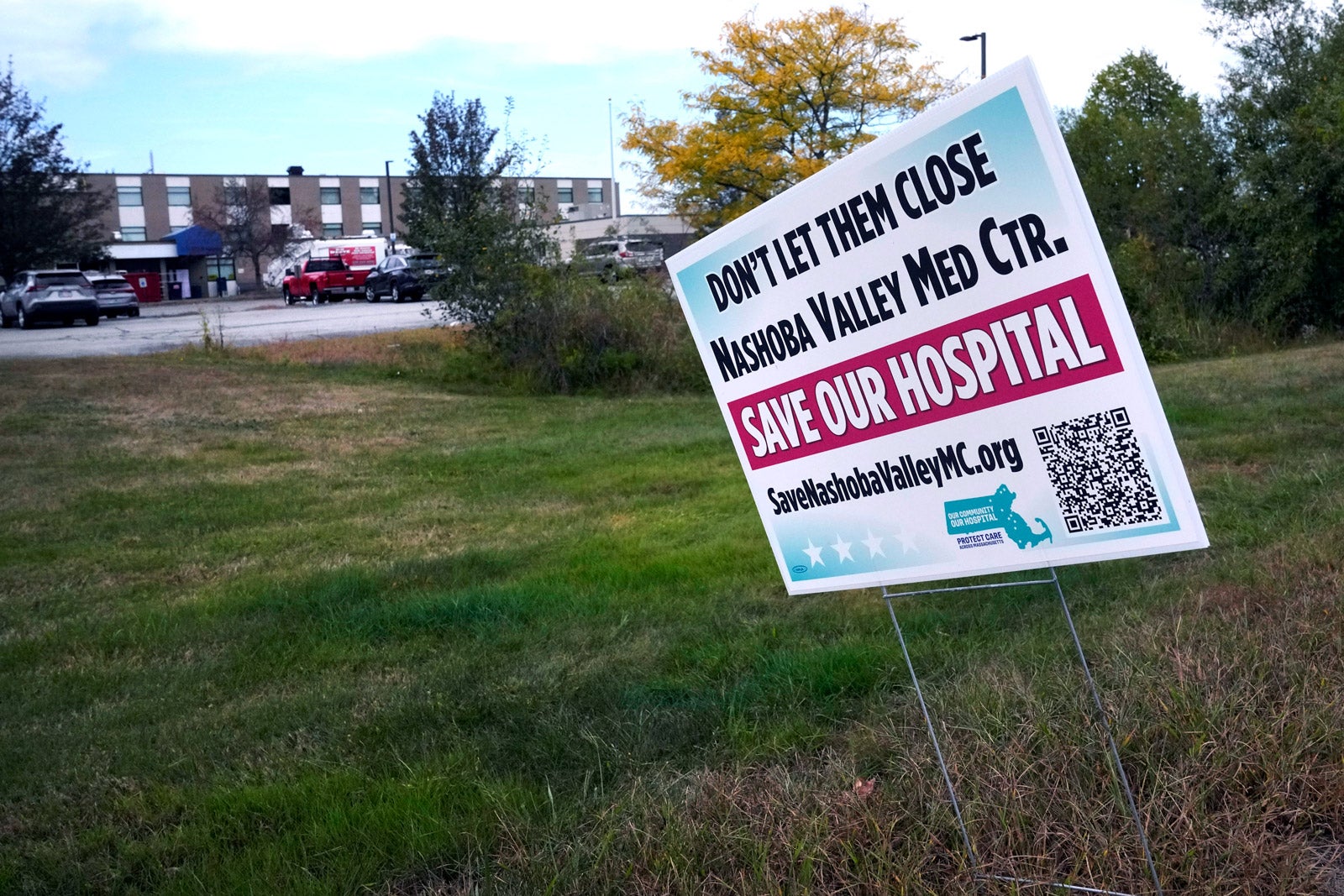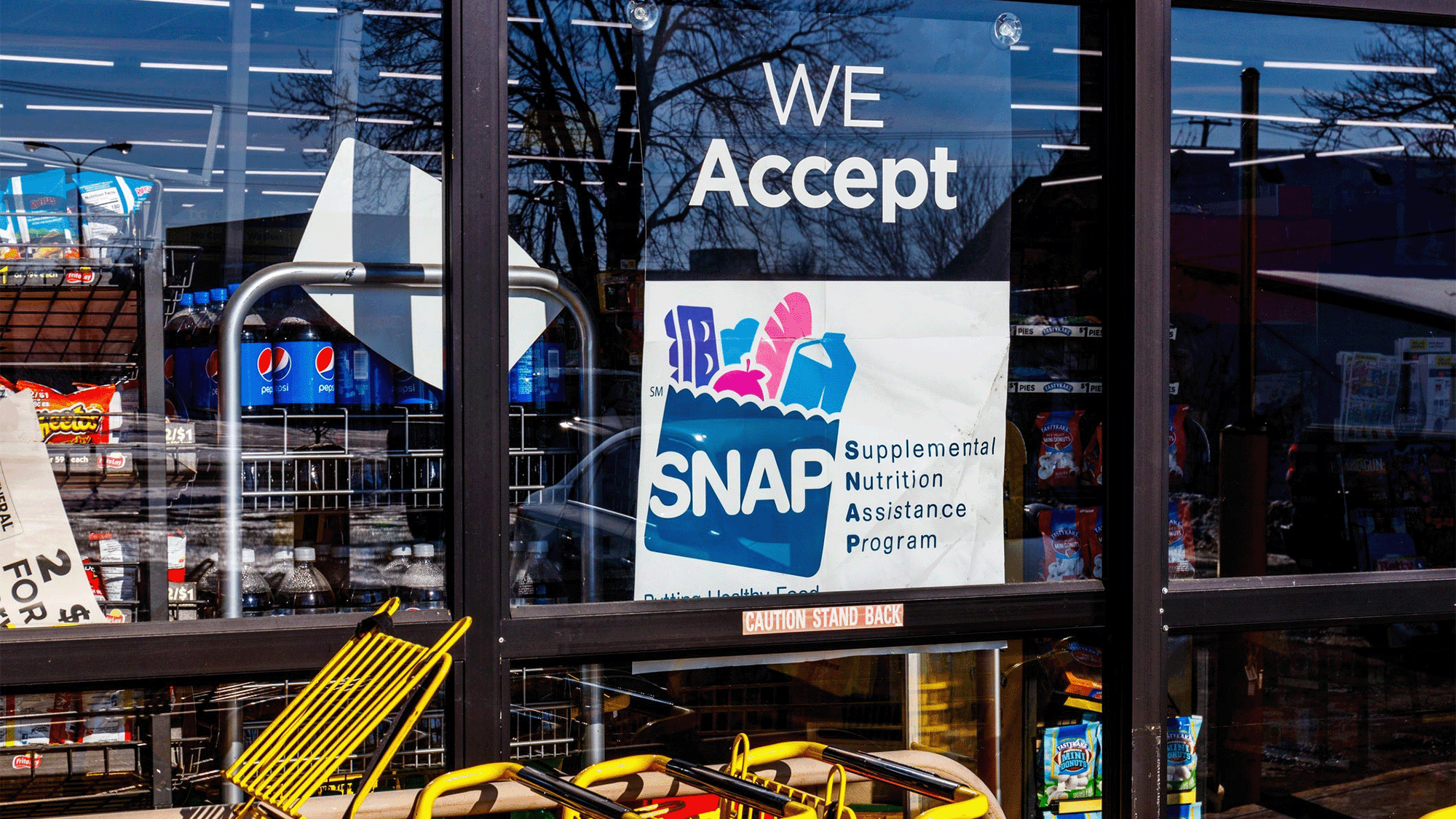How Medicaid cuts could lead to loss of coverage for millions

On July 4, President Trump signed the “One Big Beautiful Bill Act” into law, introducing major changes to Medicaid, the joint federal/state program that provides health insurance to low-income adults and families, people with disabilities, pregnant people, and seniors. Harvard T.H. Chan School of Public Health’s Benjamin Sommers, Huntley Quelch Professor of Health Care Economics, and Adrianna McIntyre, assistant professor of health policy and politics, share their reactions to the law and discuss potential consequences for Medicaid recipients and the U.S. health care system.
Q: What’s your overall take on the new law?
McIntyre: The effects of the law won’t be limited to the people most directly affected by new policies, the millions expected to lose health insurance coverage. Everyone’s familiar with the phrase, ‘A rising tide lifts all boats,’ right? By creating a bigger pool of insured patients, the Affordable Care Act (ACA) offered a rising tide to the safety net health care providers and rural hospitals that disproportionately serve low-income communities and operate on razor-thin margins.
But what we’re facing now is an ebbing tide. This is really an unprecedented retrenchment of health insurance and social services and in the U.S. Between the Medicaid cuts and other policy changes on the horizon, we’re expecting to see about 50% more Americans uninsured in a decade than we have today.
Sommers: There are folks who’ve described this law as a stealthy repeal of the ACA, or death by a thousand cuts. I think that’s largely accurate. For context, in the last two years, our uninsured rate has been at its lowest level ever. This new law is the largest legislative rollback of health coverage that we’ve ever seen. Projections for the uninsured rate have us landing roughly halfway between where we are now and where we were before the ACA was passed in 2010 (or even worse).
I think what’s really important to understand about this law is that it makes cuts to Medicaid in ways that aren’t very visible to the general public. Most Americans want to keep funding for Medicaid the same, if not increase it—yet policymakers have introduced essentially a 12% cut to the program. How? By making the cuts hard to see and hard to explain. The most highly visible forms of cuts to Medicaid that were being debated—for example, the proposal to reduce the amount of federal dollars supporting Medicaid expansion—didn’t make it into this bill. Instead, policymakers have buried their shrinking of Medicaid in complicated policies that don’t immediately register as cuts.
McIntyre: If you picture the U.S.’s social safety net as an actual net, cutting off the edges of the net is an obvious way to make it smaller. What these policies are instead doing is cutting new holes in the net for people to slip through. And they’re making existing holes bigger. We’re not looking at a narrowing of the overall scope of Medicaid; we’re looking at policies that make it harder for people to stay covered by the program.
Q: Work requirements have gotten a lot of attention in the new law. Explain how those could have a significant impact on coverage.

Sommers: Starting in January 2027, Medicaid enrollees will have to begin complying with new work requirements to maintain their coverage. At least every six months, they’ll have to submit paperwork to prove to the state that they either are employed or exempt (for instance, because they’re studying, caring for young children or a disabled family member, or living with a qualified disability). Proponents of the work requirements say that the only people who will lose coverage are those lazy and bilking the system, who aren’t working but should be, and that everyone else is protected. For many voters, it’s not immediately obvious that this is a cut. But we know that that’s the exact effect work requirements will have. The Congressional Budget Office (CBO) estimates that 4.8 million people will lose coverage because of work requirements. Based on previous research, the vast majority of those losing coverage will be legitimately employed or exempt; they won’t be kicked off of Medicaid because they’re ineligible, they’ll be kicked off because the more frequently you make people go through an application or reporting process, the more likely they are to not navigate it successfully. Imagine having to file your income taxes multiple times per year; a whole lot of us would miss deadlines or even forget to do it. Imagine the consequence of that being losing your health insurance.
McIntyre: I like the example of income taxes—government paperwork we’re accustomed to doing. There’s one time every year we know we have to do it; we know what the deadline is; we can file for an extension. With the new work requirements, there’s no common deadline and there’s no filing for an extension. If you miss it, you’re disenrolled, with potentially devastating impacts. There’s evidence that even short gaps in health coverage can result in adverse health outcomes. The churn we’re likely to see from these new work requirements could cause a lot of harm, totally unnecessarily. It defies common sense to believe that all 4.8 million people expected to lose coverage because of work requirements are truly out of compliance, that is, not working; that would mean that people are absolutely perfect at responding to paperwork, and that that just isn’t the case. That isn’t how humans work.
Sommers: It isn’t how states work, either. During the 2023 unwinding of the pandemic era policy that gave people continuous coverage in Medicaid during the public health emergency, we frequently saw states having to backtrack on procedural mistakes they made—sending beneficiaries the wrong paperwork, terminating people’s coverage inappropriately even with the right data. Just as we can’t assume that people will perfectly respond to the work requirements, we can’t assume states will perfectly implement them.

Q: What are the challenges states face in implementing the new work requirements?
McIntyre: The system changes required will be an enormous lift. States will have to work with the Centers for Medicare and Medicaid Services (CMS) and private vendors to recode their systems to reflect the new rules. They’ll also likely need to do a lot of hiring and training. More paperwork requirements mean more case workers needed to manually resolve a higher volume of paperwork issues, and states will need to train their existing workforces on processes they’ve never seen before. If states don’t staff up adequately in the face of these new demands, it will mean more people slipping through the cracks.
Sommers: Georgia’s experience implementing state-level Medicaid work requirements is illustrative. In 2022, Georgia spent around $30 million to set up a new system to evaluate and process Medicaid applications in accordance with work requirements; they’ve spent another $20 million since then. When this effort began, state officials told CMS the new system would take them two years to set up—and it didn’t go very well, with enrollment way below their targets. Now compare that to the timeline and budget states were given to stand up systems compliant with the new law. The federal government has set aside $200 million for the 40 states that adopted expansion to stand up new systems in 18 months. It’s clearly not enough money or time, though states can receive matching federal funds for other improvements to support the new policy. We’ll likely start hearing from state Medicaid employees with concerns around data errors and challenges interacting with the system. Ultimately, people will lose coverage because state administrative systems won’t be up to the task.
CMS Administrator Mehmet Oz has expressed enthusiasm around apps and floated the idea of CMS rolling out a tech program to assist states with this process. I think it’s a positive sign that Administrator Oz is focused on the administrative challenges facing states. The more CMS supports them, the better. But I’m not optimistic that there’s an app that’s going to enable us to avoid the red tape coverage losses most independent analysts are expecting.
McIntyre: It’s worth reemphasizing that a major challenge is that people aren’t aware they’re supposed to be wading through red tape. Our research on Medicaid unwinding showed that four in 10 low-income people enrolled in Medicaid in the states we surveyed had never heard about unwinding, didn’t know that their coverage might be in jeopardy. That was the case despite three years of lead time, lots of outreach from states, and an advertising campaign by the federal government.
Sommers: Similarly, our team’s previous research showed that when Arkansas implemented state-level work requirements in 2018, one-third of Medicaid beneficiaries subject to the requirements had never heard about them. Media interviews showed Arkansans who lost coverage saying, ‘I keep up. I read my mail.’ But people have a lot going on in their lives, and again, these policies are complicated. States are going to have to invest a lot in direct outreach. And that’s not just their responsibility—it’s also the federal government’s. Health care providers and community organizations can also play a key role in helping people maintain their coverage.
In [many] communities, whether rural, urban, or suburban, everyone is in some way reliant on Medicaid—at least to keep their hospitals and clinics open—and everyone is hurt by cuts to it.
Adrianna McIntyre, assistant professor of health policy and politics
Q: How are copays changing under the new law?
Sommers: Medicaid beneficiaries living above the federal poverty line will be responsible for a $35 copay for many health services. That will be incredibly disruptive to a lot of people. Living above the poverty line doesn’t mean you’re well off; you could be making $18,000 per year. Decades of research has shown that when people face copays, they use fewer services. The consequences for low-income individuals and those with chronic conditions—people who make up much of the Medicaid population—can be severe: Skipped medications, avoidable hospitalizations. So this is another version of a subtle cut to Medicaid. It’s not just fewer people being enrolled; it’s also a cut to the quality and value of coverage, such that people will have to make terrible choices between seeing a doctor or going to the grocery store.
McIntyre: I think the tell is in the fact that the law exempts several services from the copay: primary care, mental health care, substance use disorder services. Clearly lawmakers understand that cost sharing will keep people out of these types of care, and broadly that copays have adverse effects on health care access. I’m not sure what they’re trying to accomplish. Why should a Medicaid beneficiary be paying $35 for chemotherapy?
Q: What are some other cuts people may not be aware of?
Sommers: The law shortens the window of time in which people can apply for Medicaid coverage retroactively, from three months to one or two months, depending on the person. This could be particularly devastating for people with catastrophic illness or injury. If they don’t immediately apply for Medicaid (amidst their health emergency), they could be on the hook for costs that the longer three-month period might have previously protected them from.
States now face restrictions on “provider taxes,” a key way they fund their Medicaid programs. This will create budget shortfalls and force state lawmakers to figure out where they can pare back. Some states may choose to pull funding from home- and community-based care waivers, which would take a major toll on people with disabilities.
McIntyre: The law also reduces benefits for many immigrants—even those in the U.S. lawfully—and makes it harder for individuals to become and stay enrolled in health coverage through the ACA marketplace.
Q: How might hospitals and clinics be impacted?
McIntyre: Fewer people enrolled in Medicaid or Marketplace plans means less revenue for health care facilities. Facilities that primarily serve Medicaid beneficiaries—many of which were already teetering at the edge of solvency—are at risk of budget shortfalls that could lead to closure. This is an especially scary scenario in rural communities, where a shuttered hospital or community health center may have been the only game in town. That means all people who rely on those facilities—not just Medicaid beneficiaries—will need to drive farther for care. Some might put off care because they can’t, for example, take that much time off work or don’t have reliable transportation.
We’ve already seen a clinic in rural Nebraska announce its plan to close, citing the new law. Is it fair to completely attribute that hospital closure to the passage of the law? Maybe not. But the fact of the matter is, a lot of health facilities that were already struggling are not going to see a path to sustainability. They’ll decide to cut their losses sooner rather than later.
Sommers: The law does introduce a temporary $50 billion rural health care fund intended to mitigate these potential closures. That’s not trivial. But it’s worth pointing out that a lot of safety net hospitals aren’t rural. We also have urban and suburban facilities where Medicaid beneficiaries are the majority of patients. These facilities are going to struggle with less funding and will be at risk of closure, too, potentially forcing their patients to seek care elsewhere. And we don’t know yet how this rural fund will be administered—will the dollars get to the right places? Will it go away after the initial five years of funding?
McIntyre: In these communities, whether rural, urban, or suburban, everyone is in some way reliant on Medicaid—at least to keep their hospitals and clinics open—and everyone is hurt by cuts to it.
Learn more
Medicaid cuts: What’s at stake (Harvard Chan School news)


